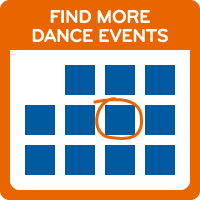Interview of Amy Fitterer
Wednesday, June 29, 2011
Interview of Amy Fitterer
TimeOut Chicago
The new executive director of Dance/USA on Pico Iyer, Chicago’s New Stages for Dance Initiative and the art form’s role in international relations.
By Zachary Whittenburg
What is Dance/USA, exactly?
There are wonderful national associations dedicated to dance education and dance criticism, but we are the sole national service organization dedicated to professional dance.
What’s a national service organization?
Advocacy is a big part of the work that we do.… We are often the only voice in [Capitol Hill] meetings discussing professional dance companies in legislators’ districts. One of our services is to positively affect federal arts policies, on funding, visa processing, charitable-giving laws, cultural exchange support, media and communications.
Has the visa application process gotten easier for foreign artists?
We’ve seen a lot of progress in the last year.… It’s not a promise, but it’s now a goal to approve artists’ visas within 14 days.
Down from how long?
In the past, it’s taken months.… A lot of the problems come from miscommunication and misunderstanding about what it means to have performed a lead role in a ballet, what it means to be a member of a contemporary-dance company.… Not everyone reviewing these petitions understands what those roles are, realizes that those are very successful roles.
What’s on your agenda as the new executive director, since January, of Dance/USA?
We’re an incredibly diverse industry…from the ballet companies to the contemporary and the modern and the tap and the jazz and the culturally specific and the hip-hop and the break dancing and the rock-climbing ballet, to the commercial world, with the Broadway dancers and the backup dancers for major musical artists and to dance on television. I’m interested in finding a way to bring some common ground to this very, very vibrant world.
Tell me about the New Stages for Dance Initiative, which recently launched in Chicago.
It’s one of our partnerships, with Audience Architects in Chicago. With support from the MetLife Foundation, we’re helping dance companies perform longer in their home communities by offering subsidies to venues.
What’s in it for choreographers not drawn toward making work for traditional stages?
Sure, well, my answer is going to be practical. When I look at the venues in Chicago for this pilot round, they are…landmark venues, if that’s an accurate statement, but we’re very interested in seeing this program continue, and conversations like these are exactly the ones we need to be having. You’re absolutely right: There are going to be certain works of dance that might not fit in these particular [first-round] venues. There really is no one-size-fits-all.
What’s an issue you feel is particularly urgent for the field?
Across the board, I think, for non-profit performing arts organizations, we’re having to justify why we deserve tax-exempt status. This is an issue being discussed right now in Congress, [which is] looking at charitable giving laws…which will have a huge impact on the non-profit community as a whole. How does a major performing-arts institution justify its tax-exempt status? I am seeing more and more creative ways of developing community partnerships [by arts organizations].… It’s [about] coming up with tangible examples of the public value, and it’s looking at other revenue sources, new models.
What relevance, if any, do arts cuts in Europe have to dance in the States?
The funding structures may be different, but the conversations are [both about] a desperate need to cut and save money at the government level, and what happens is, the arts are the easiest things to cut, from a government’s perspective.… We’re not frilly entertainment, as you-the-government are painting us to be. We are economic activity, we are public diplomacy around the world.… Our own government cut $21 million [to the arts] in this fiscal year, and our president has proposed another cut for next year. You ask yourself, well, How is that helping this massive deficit?
And what’s your answer to that?
We absolutely have value, to education, to the well-being of society, to economic impact, community development and unity, crossing cultural divides… It’s a shame.
Why did Dance/USA decide to invite Pico Iyer to present its keynote?
It was well underway before I was in this position, but I understand that some of the staff had heard him speak and they were floored by his outlook on life, and his vision of where humanity and the arts are headed.
He’s not who you might expect at a dance industry conference.
You hear from your members that, on one hand, they want training and insight from more experienced peers, and on the other, they want to be hearing from thinkers outside of the field that they’re operating in on a daily basis. I do think that Pico Iyer is going to be that person…who’s looking at the big picture of how things are evolving, and can reflect on that in the context [of dance].
Do you have a background in dance?
For 13 years, I was very much dedicated to the world of ballet, and dreamed of being a professional ballet dancer. I was also training as a classical pianist, and by the age of 14 I started accompanying ballet classes at Nutmeg [Conservatory for the Arts in Connecticut] as well. Any kind of intense training like that early on really shapes your approach to life, I think, in terms of time management, discipline and things like that.… I absolutely loved dancing. I was literally that nine-year-old who fell asleep dreaming of dancing onstage.
Dance/USA’s 2011 annual conference begins Wednesday 13 in various venues.
Find this article online here.
The new executive director of Dance/USA on Pico Iyer, Chicago’s New Stages for Dance Initiative and the art form’s role in international relations.
By Zachary Whittenburg
What is Dance/USA, exactly?
There are wonderful national associations dedicated to dance education and dance criticism, but we are the sole national service organization dedicated to professional dance.
What’s a national service organization?
Advocacy is a big part of the work that we do.… We are often the only voice in [Capitol Hill] meetings discussing professional dance companies in legislators’ districts. One of our services is to positively affect federal arts policies, on funding, visa processing, charitable-giving laws, cultural exchange support, media and communications.
Has the visa application process gotten easier for foreign artists?
We’ve seen a lot of progress in the last year.… It’s not a promise, but it’s now a goal to approve artists’ visas within 14 days.
Down from how long?
In the past, it’s taken months.… A lot of the problems come from miscommunication and misunderstanding about what it means to have performed a lead role in a ballet, what it means to be a member of a contemporary-dance company.… Not everyone reviewing these petitions understands what those roles are, realizes that those are very successful roles.
What’s on your agenda as the new executive director, since January, of Dance/USA?
We’re an incredibly diverse industry…from the ballet companies to the contemporary and the modern and the tap and the jazz and the culturally specific and the hip-hop and the break dancing and the rock-climbing ballet, to the commercial world, with the Broadway dancers and the backup dancers for major musical artists and to dance on television. I’m interested in finding a way to bring some common ground to this very, very vibrant world.
Tell me about the New Stages for Dance Initiative, which recently launched in Chicago.
It’s one of our partnerships, with Audience Architects in Chicago. With support from the MetLife Foundation, we’re helping dance companies perform longer in their home communities by offering subsidies to venues.
What’s in it for choreographers not drawn toward making work for traditional stages?
Sure, well, my answer is going to be practical. When I look at the venues in Chicago for this pilot round, they are…landmark venues, if that’s an accurate statement, but we’re very interested in seeing this program continue, and conversations like these are exactly the ones we need to be having. You’re absolutely right: There are going to be certain works of dance that might not fit in these particular [first-round] venues. There really is no one-size-fits-all.
What’s an issue you feel is particularly urgent for the field?
Across the board, I think, for non-profit performing arts organizations, we’re having to justify why we deserve tax-exempt status. This is an issue being discussed right now in Congress, [which is] looking at charitable giving laws…which will have a huge impact on the non-profit community as a whole. How does a major performing-arts institution justify its tax-exempt status? I am seeing more and more creative ways of developing community partnerships [by arts organizations].… It’s [about] coming up with tangible examples of the public value, and it’s looking at other revenue sources, new models.
What relevance, if any, do arts cuts in Europe have to dance in the States?
The funding structures may be different, but the conversations are [both about] a desperate need to cut and save money at the government level, and what happens is, the arts are the easiest things to cut, from a government’s perspective.… We’re not frilly entertainment, as you-the-government are painting us to be. We are economic activity, we are public diplomacy around the world.… Our own government cut $21 million [to the arts] in this fiscal year, and our president has proposed another cut for next year. You ask yourself, well, How is that helping this massive deficit?
And what’s your answer to that?
We absolutely have value, to education, to the well-being of society, to economic impact, community development and unity, crossing cultural divides… It’s a shame.
Why did Dance/USA decide to invite Pico Iyer to present its keynote?
It was well underway before I was in this position, but I understand that some of the staff had heard him speak and they were floored by his outlook on life, and his vision of where humanity and the arts are headed.
He’s not who you might expect at a dance industry conference.
You hear from your members that, on one hand, they want training and insight from more experienced peers, and on the other, they want to be hearing from thinkers outside of the field that they’re operating in on a daily basis. I do think that Pico Iyer is going to be that person…who’s looking at the big picture of how things are evolving, and can reflect on that in the context [of dance].
Do you have a background in dance?
For 13 years, I was very much dedicated to the world of ballet, and dreamed of being a professional ballet dancer. I was also training as a classical pianist, and by the age of 14 I started accompanying ballet classes at Nutmeg [Conservatory for the Arts in Connecticut] as well. Any kind of intense training like that early on really shapes your approach to life, I think, in terms of time management, discipline and things like that.… I absolutely loved dancing. I was literally that nine-year-old who fell asleep dreaming of dancing onstage.
Dance/USA’s 2011 annual conference begins Wednesday 13 in various venues.
Find this article online here.




